10 Most Colorful Natural Things To See In A Desert
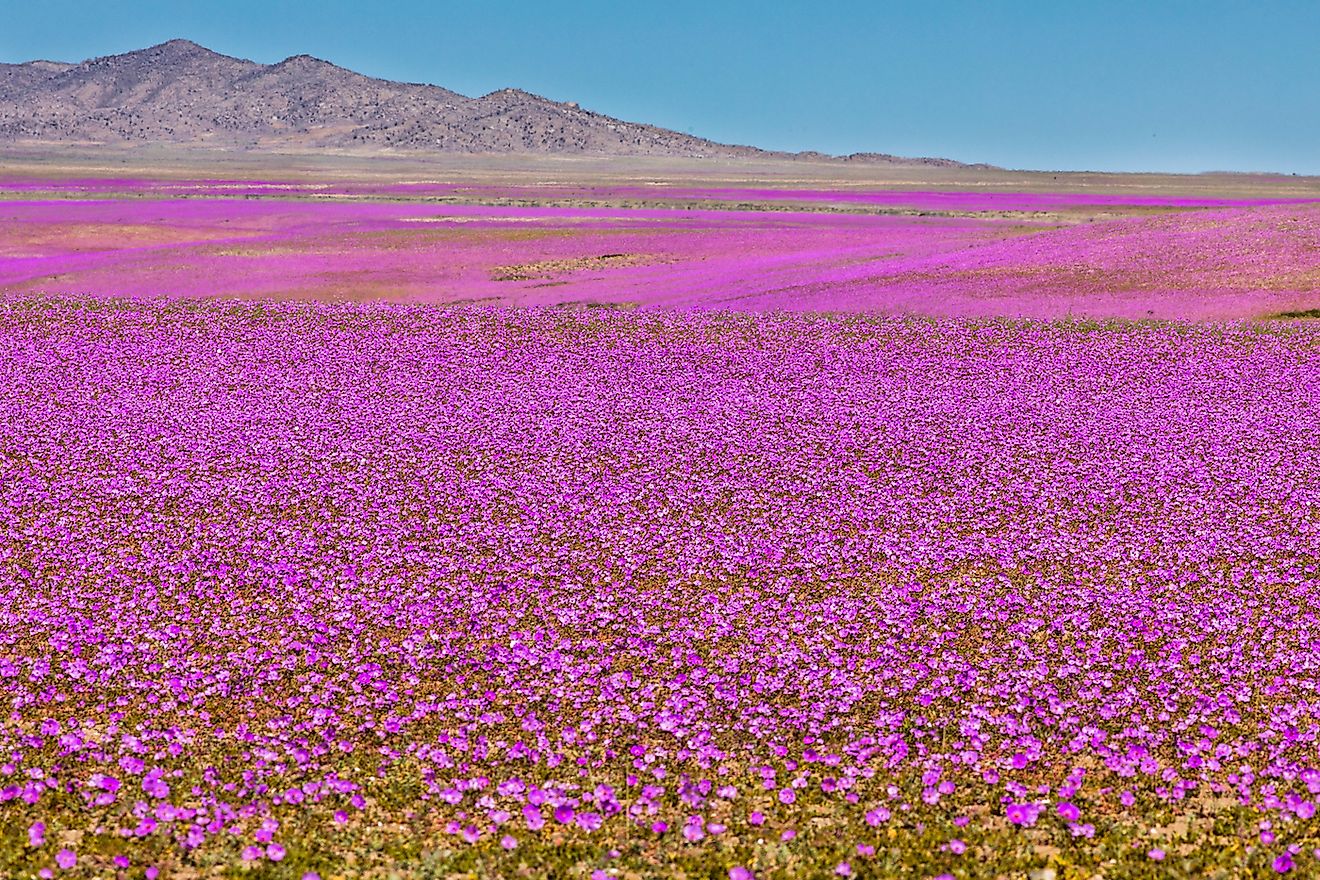
- The Flowering Desert in Chile is a real world wonder every 5 years.
- Rosy-Faced lovebirds are wild parrots that get their name by doing everything in pairs.
- Colored desert stones are partly due to a chemical reaction and partly - the result of landscape evolution.
Many don't associate deserts with color, automatically picturing a monotone region with a barren landscape. In reality, sand, rocks, and even the sunset skies, can all attain other-wordly colors in a desert environment. From flora, there are blooming trees, cacti, flowers and other plants decorating deserts, that thrive with their succulent systems in the hot sun and well-drained soil. Succulent plants have thick leaves and stems with a spongy feeling to touch. They are able to absorb moisture and stay hydrated, thriving in a dry, desert environment. There are also animals that bring a sudden splash of color, if one is lucky to come across a fauna-representative, mentioned on this list of 10 Most Colorful Natural Things To See In A Desert.
10. Desert Sunsets
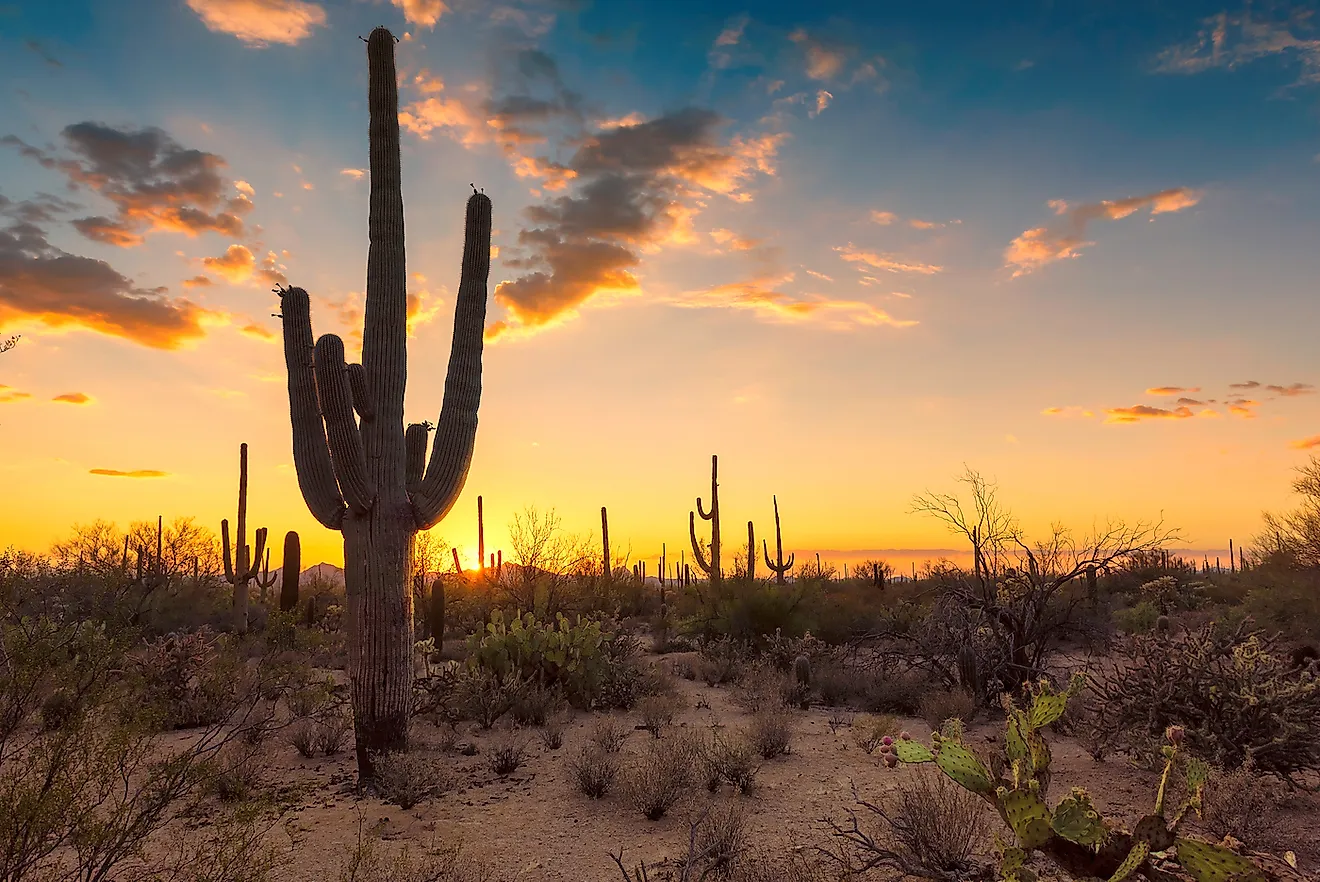
City pollution diminishes the possibility of seeing colorful sunsets, while other natural biomes do not get the magnificent sunsets due to humidity that "waters down" the effects of sun rays, and gives the sky pastel tones. Deserts, void of moisture in the air, allow long sunrays with a full spectrum of light, including the shorter blue and purple wavelengths, to get through the atmosphere and reach the earth. Furthermore, colorful limestone bands in many deserts, reflect the rays back, to make the sunset appear even brighter.
9. The Painted Desert and Limestone Color Bands
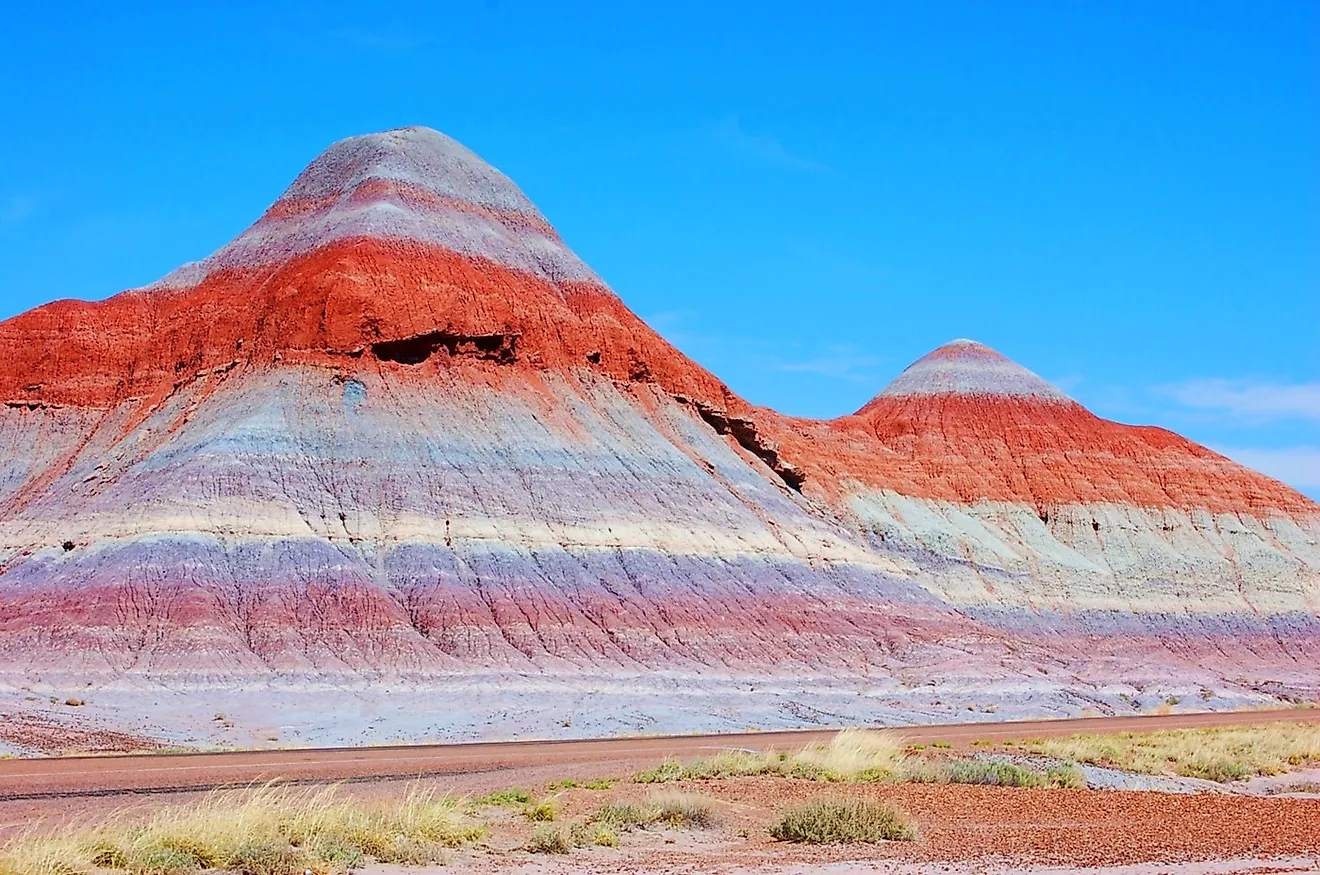
The Painted Desert's rock formation and other deserts with colorful limestone bands evolved since the inception of the Earth in a composition of varying textures and colors. Rock layers that contain iron and manganese, produce red and lavender hues upon coming into contact with oxygen particles, while the blues and the greens are sandstone and sea deposits left on the limestone from the time the region was underwater. Since then, the everchanging landscape has experienced everything from floods and earthquakes to volcanic eruptions and increasing sun exposure, producing the color palette that is so unexpected to a human eye in a desert environment.
8. Sand
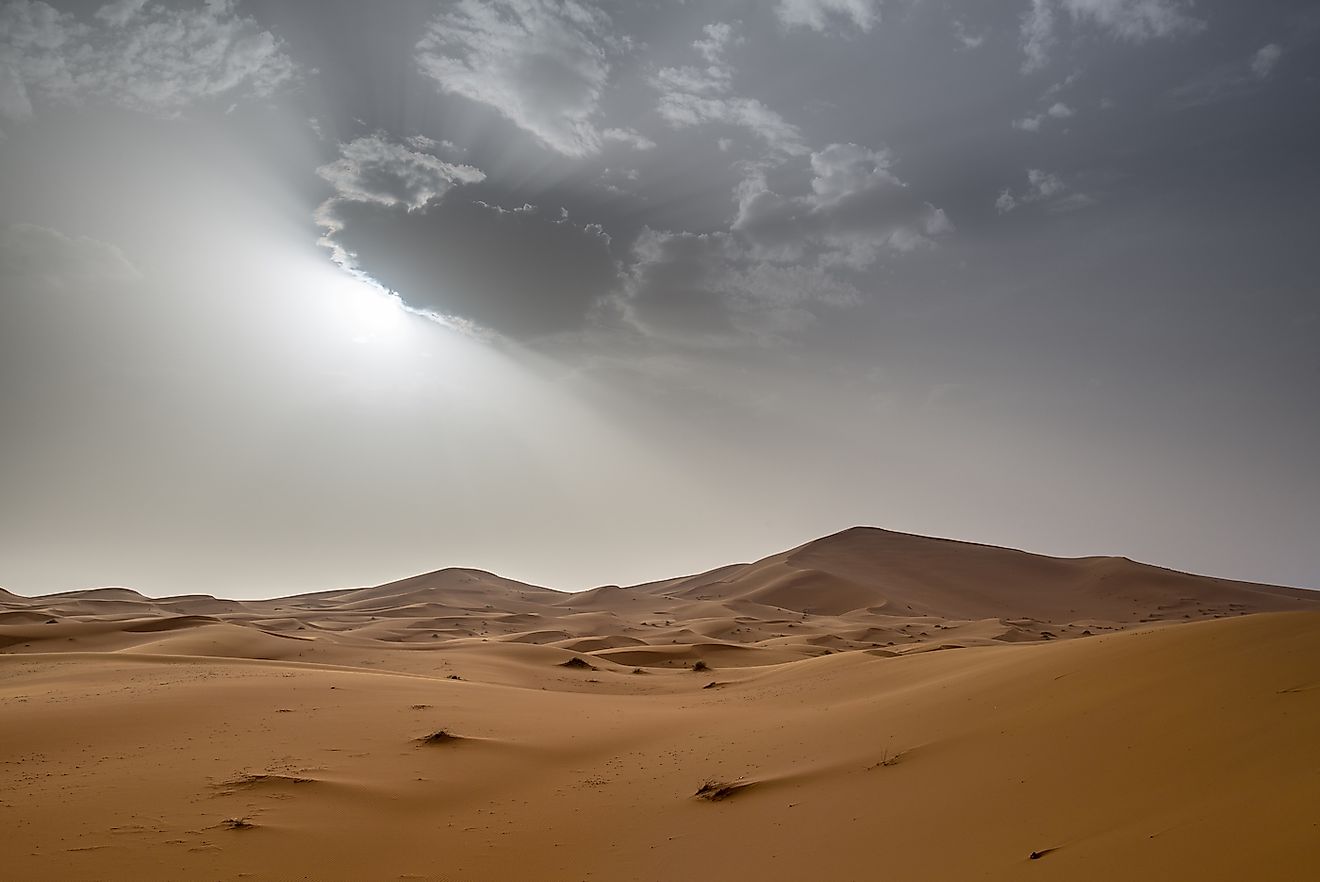
The iron oxides and other minerals that make desert rocks red, also produce the coral effect in the sand. Arriving in a desert late in the afternoon, one can also perceive sand in other unnatural hues, such as blues, purples, and even greens, due to the reflected sunlight and vivid colors of the sky casting shadows.
7. Green Cacti
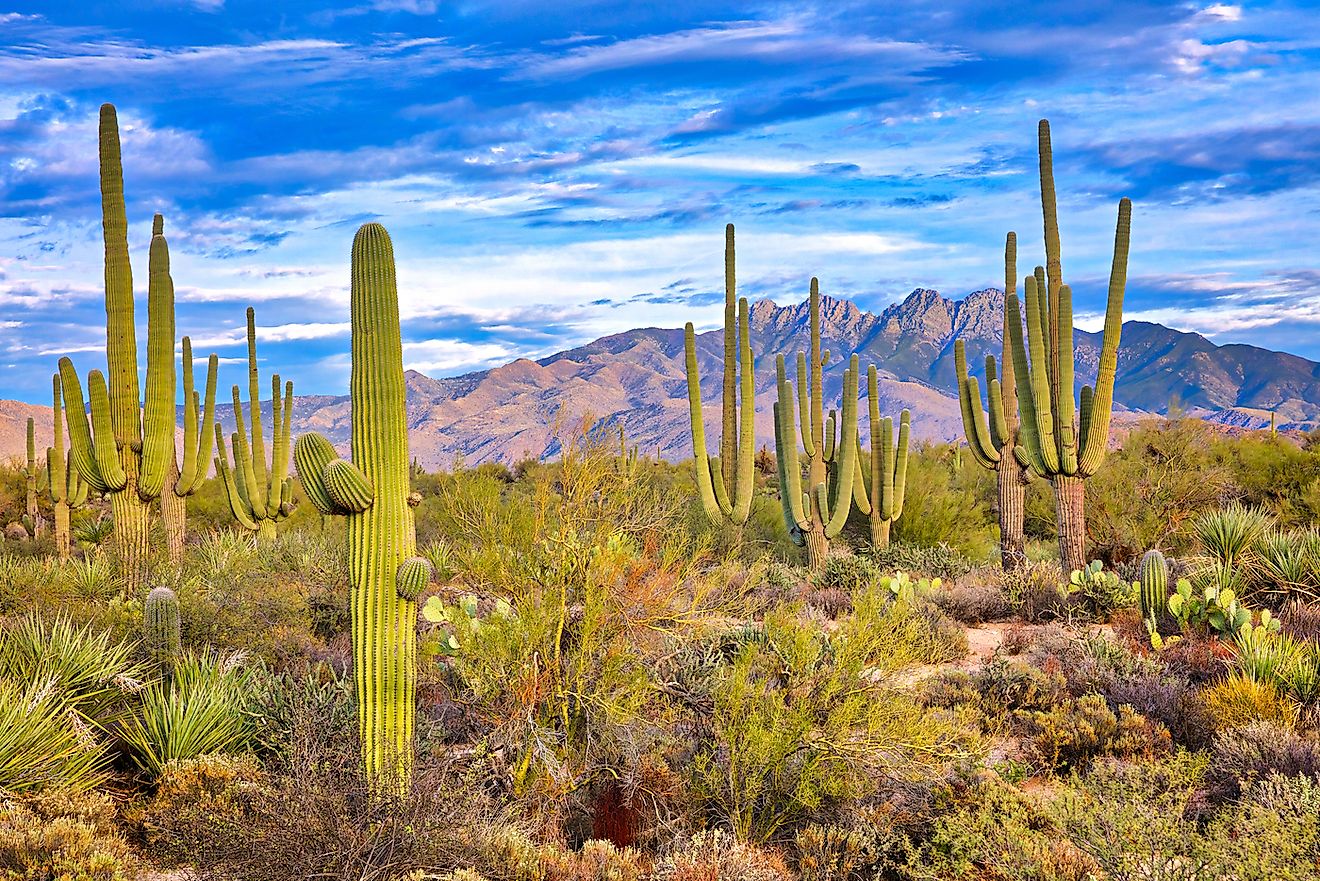
Saguaro Cactus is the most widespread cactus in this habitat and a necessity for other desert-dwellers. While its distinctive green branches growing out and up are used comfortably by birds to build nests, animals rely on their fruits and seeds for nutrition.
Golden Barrel Cactus is a globe-like green cactus that can reach 3 feet in diameter and produce a crown of small yellow flowers, also making it a popular choice for a garden.
At 5-feet tall and distinctively-shaped, Organ Pipe Cactus is also known for its large delicious fruit, resembling watermelon in flavor. Easily found in Arizona, Mexico, and the Sonoran Desert, these legendary cacti are a sight to behold and an experience to taste.
Prickly Pear Cactus is widespread in the Southwestern United States and known for its large pad-like succulent leaves, as well as red, purple, and yellow bulbs of flowers that appear in optimal conditions: when the sun is bright and the land is dry. With an ability to grow 5-7 feet tall, this cactus is a joy to an eye when seen in full bloom, from afar.
6. Plants
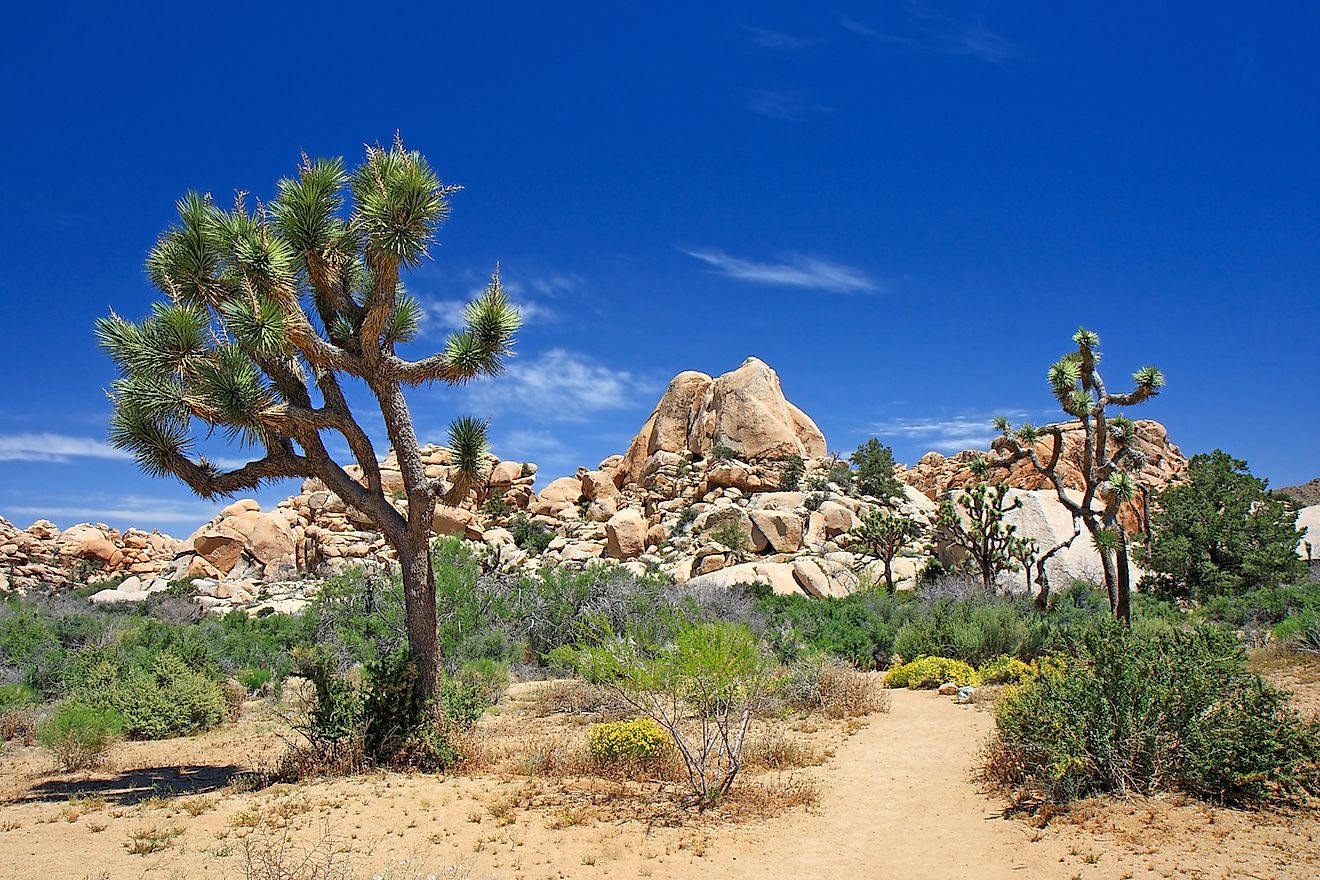
Glowing a healthy green, Aloe Vera not only retains moisture for its own nourishment, but provides health benefits to others. Breaking an Aloe Vera stem, one will find a gleaming and slightly sticky juice, which has soothing and healing properties if applied directly on dry skin, to a rash, or even to a burn.
With its rare need for water, the Jade Plant (Money Tree) is another go-to choice for a house plant that is naturally found in deserts. This good vibe "tree" is known to bring luck if kept in symbolic places around the home, while stumbling upon it in a desert, could mean a positive continuation of the journey.
As a sun-loving plant, Red Pancake gets the name from its round, flapjack-like leaves, that start out bluish-green near the stem, and end in fiery red edges. The sun helps this succulent plant produce bright yellow flowers, as well as maintain red rims on the leaves.
5. Flowers
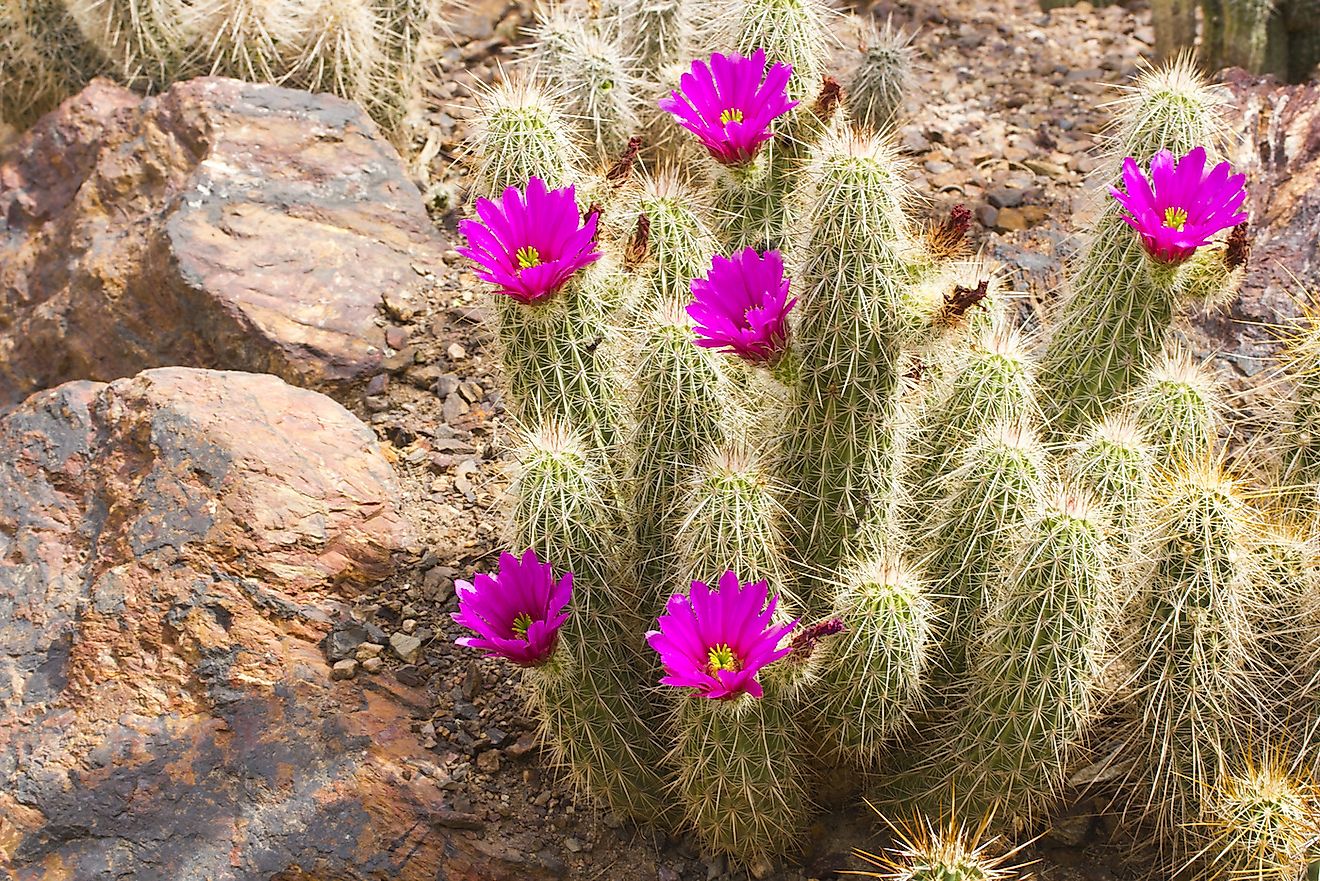
Mojave Aster is a large daisy-looking flower with a yellow center, and a thick layer of long violet petals reaching upwards, towards the sun. It can be found in Mojave Desert (South California), Sonoran Desert (Arizona, California, Mexico), and the Great Basin Desert (Nevada).
The Desert Larkspur is a very resilient flower that thrives in many harsh environments, including mountain lava rocks and gravel. It features a strong stem with many striking, blue five-petal flowers atop, reaching up to 2-feet in height.
Desert Lily can grow up to 6-feet tall and looks linen-crisp against the beige prevalence of a desert. Although part of the agave family, featuring a flat ridged stem, its white delicate flowers on top, resemble miniature lilies, earning the name for this flower.
4. Red Kangaroo
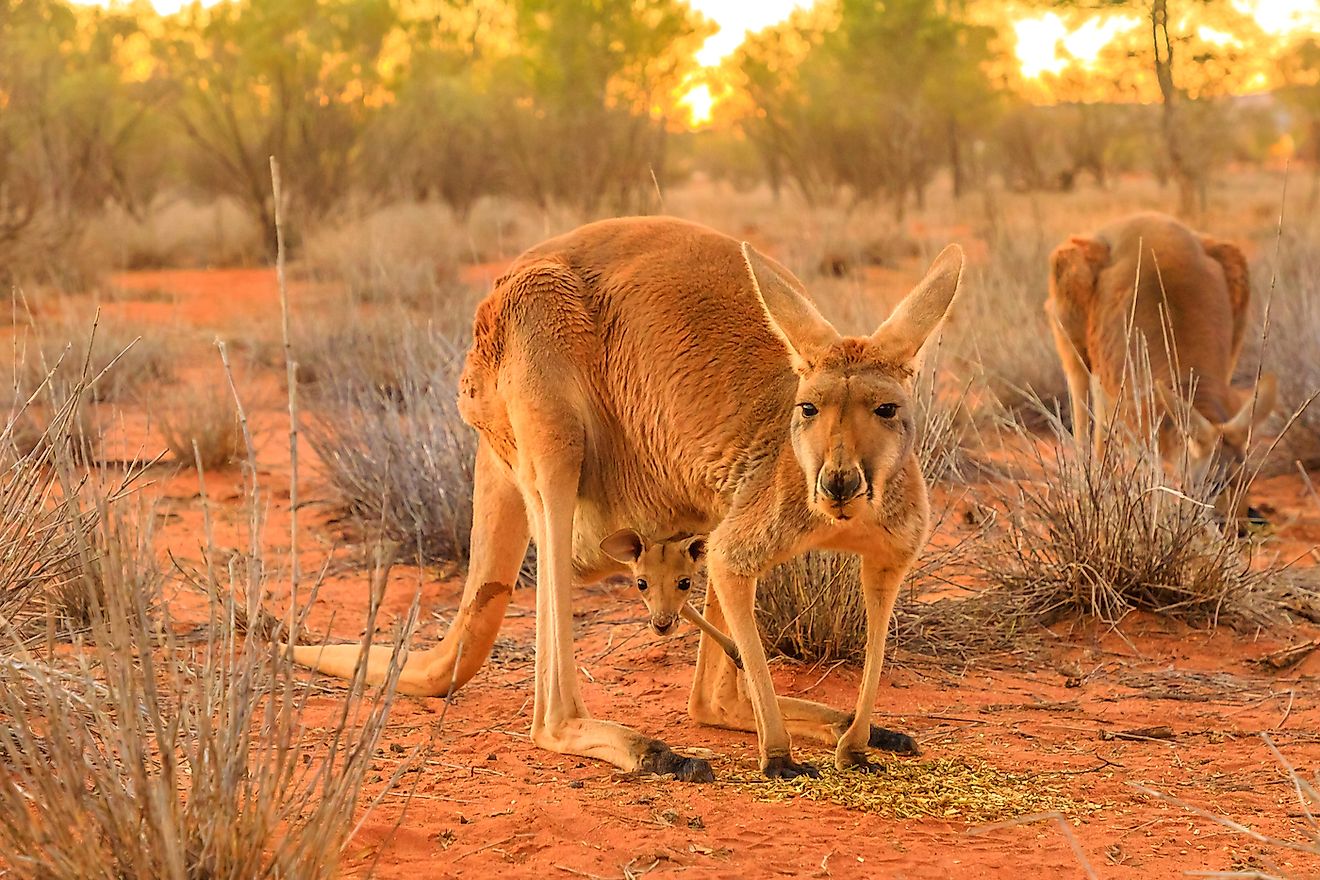
Red Kangaroo is the largest living marsupial in the world. At almost 6-feet and weighing up to 200 pounds, the reddish-brown and bluish-grey coats of males and females stand out distinctively in a desert environment. As an avid vegetarian, they rely on desert plants for nutrition and water content. Marsupials are animals whose newborns are not completely developed, living in a pouch until ready for independent survival. There are nearly twenty known marsupials in the world, including possums, opossums, and koalas, found mostly in Australia, New Guinea and America.
3. Rosy-Faced Lovebird
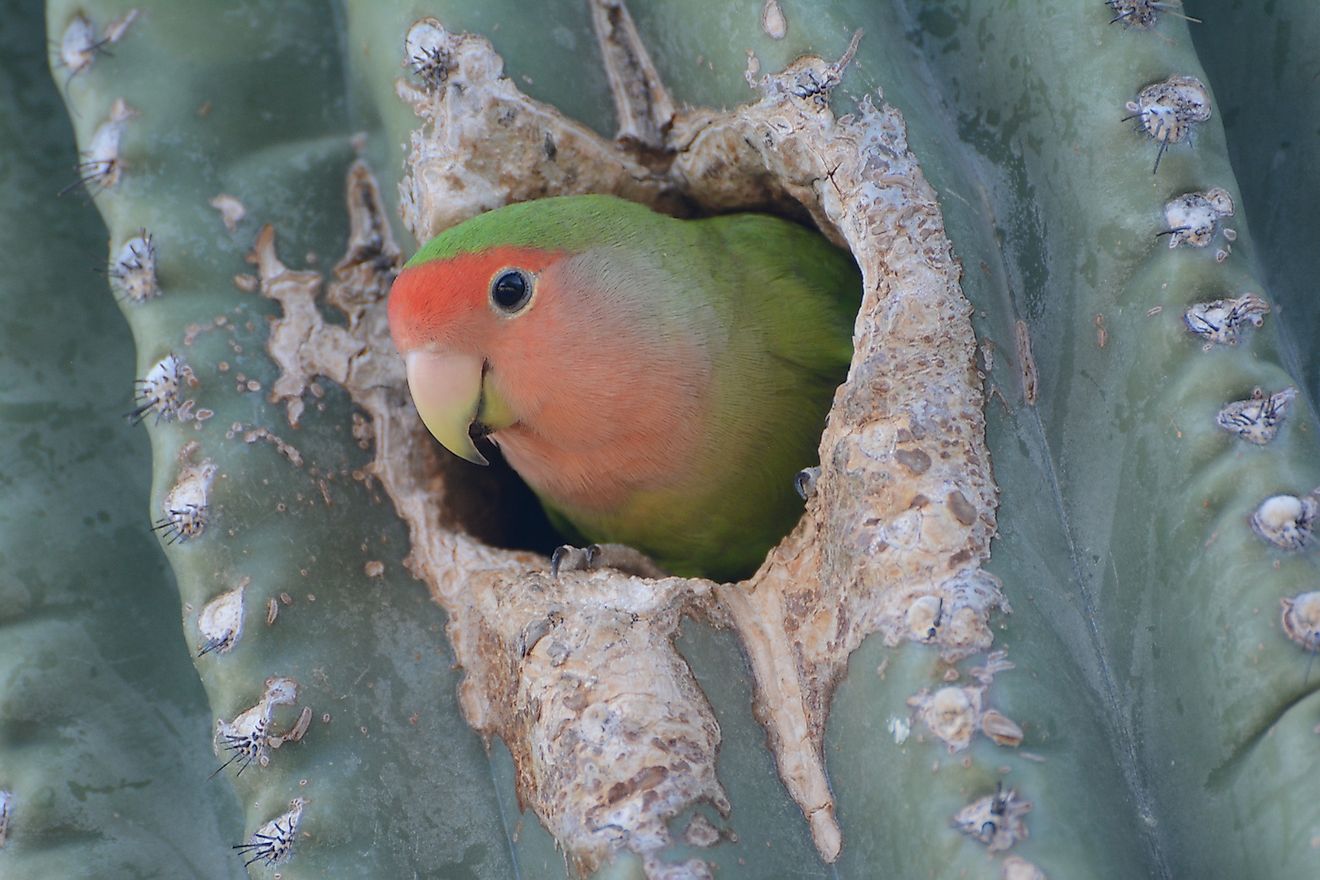
One doesn't have to fly to the native land of the Rosy-Faced Lovebird, to marvel at this cheeky parrot, since they established a population of over 2,000 in Arizona. These bright green birds with a coral chest and face, can be found flying in pairs or nesting in the holes of large Saguaro cacti in the desert.
2. Desert Rose
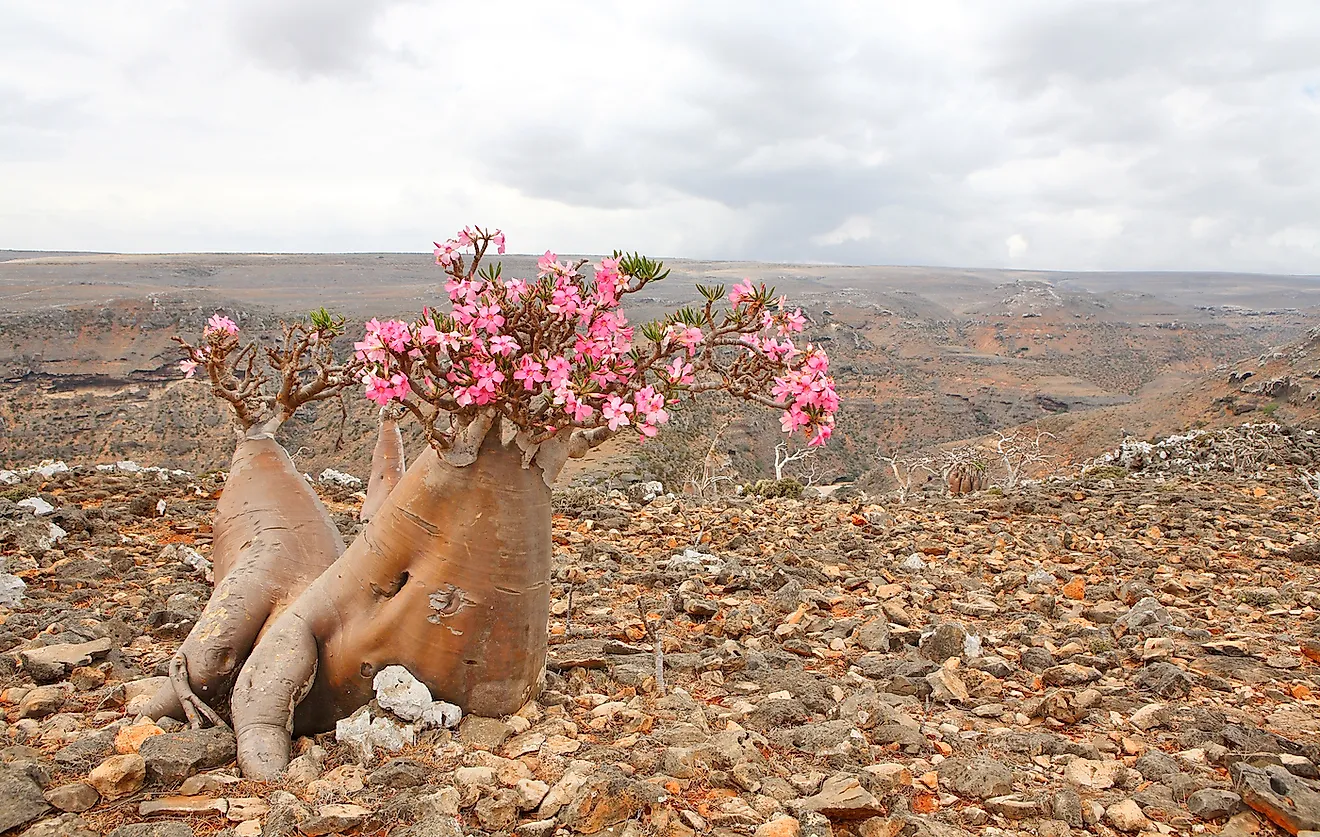
Desert Rose is a tree or a shrub, found in Africa and Arabia, that loses its leaves every year unless the winter is usually warm. It can live for hundreds of years, becoming thicker and thicker around the trunk, often reaching more than a meter in diameter. Only 4-6 feet tall, it grows succulent narrow leaves and deep-rose flowers atop. The sap from this plant is toxic and used by hunters to make poisonous arrows, killing the running animal after one mile from the place it was struck. Having been popularized by Sting's song, people choose to domesticate these plants, receiving a strict warning against their pets coming in close contact, or risk becoming fatally ill.
1. Flowering Desert in Chile
The Chilean Desert - the driest desert in the world - experiences a miracle transformation every 4-7 years from September to November. Upon displaying only rocks and sand year after year, 200 different seeds germinate in the soil and come out in a full bloom of various flowers, plants and grasses. The conditions for this phenomenon require 0.6 or more inches of rain, optimal humidity, and just the right combination of sunny and cloudy days.











